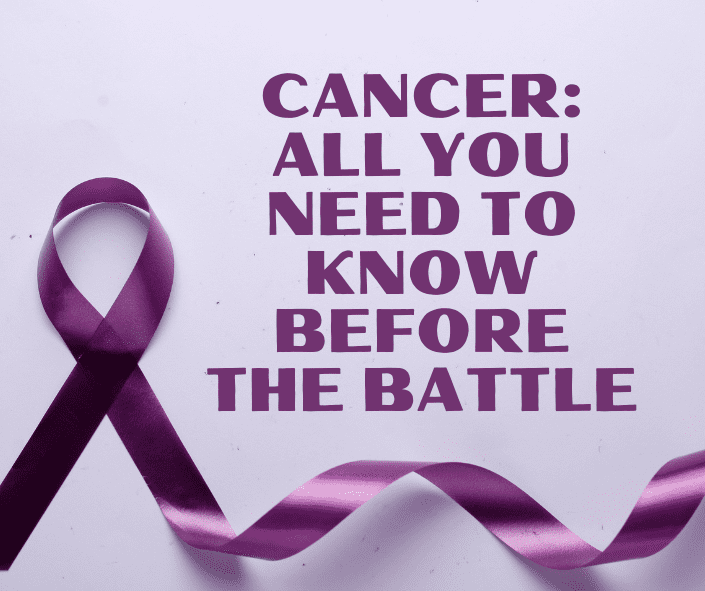The term ‘cancer’ is so powerful that it can evoke fear in many people. Many people come with a preconceived notion that cancer can not be cured. This thinking itself creates huge emotional turmoils in people diagnosed with cancer. Hence, before addressing the war against cancer, it is important to know your enemy very well so that you will not be imperiled in the battle.
Cancer can develop anywhere in the body. It is the abnormal growth of cells in the body that develops when the body’s normal control mechanism stops working. This uncontrolled growth of cells can result in tumors, damage to the immune system, and other impairment that can be fatal. Cancers, like leukemia, do not develop tumors.
What are the most common forms of cancer?
In women, breast cancer is one of the most common, and in men, it’s oral cancer. Lung cancer and colorectal cancer can be seen in both men and women.
There are five main categories of cancer:
- Carcinomas: Cancer that develops in cells that make up the skin or the tissue lining organs, such as the liver or kidneys.
- Sarcomas: Cancer that develops in the connective tissues of the body such as bone, cartilage, fat, muscle, blood vessels, nerves, or other connective tissues.
- Leukemia: Develops in the blood and bone marrow.
- Lymphomas start in the immune system.
- Brain and Central nervous system cancers
What are the warning signs?
Signs and symptoms of cancer changes depending on what part of the body is affected. Some general signs and symptoms associated with cancer include:
- Fatigue
- Lumps or thickened skin anywhere on the body
- Unexplained weight loss and loss of appetite
- A change in bowel or bladder habits
- Persistent cough or trouble breathing
- Difficulty in swallowing or chronic indigestion
- Hoarseness
- Unexplained bleeding or bruising
How is cancer diagnosed?
No single test can give a precise diagnosis of cancer. This requires a complete evaluation of a patient, which includes a detailed medical history and physical examination along with diagnostic testing. Diagnostic procedures for cancer include various tests such as imaging, laboratory tests (including tests for tumor markers), tumor biopsy, endoscopic examination, surgery, or genetic testing. These tests can determine whether a person has cancer, or if another condition is mimicking the symptoms of cancer. Following are some of the standard cancer screening tests:
- Blood tests
- Complete blood count (CBC)
- Urinalysis
- Tumor markers
- X-ray
- Computed tomography scan (CT scan)
- Bone scan
- Low-dose helical computed tomography.
- Mammography
- Pap test and human papillomavirus (HPV) testing
- Breast MRI
- Clinical breast exams and regular breast self-exams
- Skin exams
- Transvaginal ultrasound, and many more.
Why is early diagnosis important?
Diagnosing cancer, at its earliest stages, often improves the treatment outcomes. Finding cancer when it isn’t too large and hasn’t spread, is more likely to be treated successfully and save a life. Late diagnosis reduces the effectiveness of treatment and lower chances of survival. Cancer diagnosis can be delayed due to several factors such as
- Little awareness of the signs and symptoms of cancer.
- Delaying the expert intervention by Ignorance, carelessness, and self-treatment.
- Delays in general practitioner referring patients on for tests or treatment.
How is cancer treated?
Treatment for cancer varies depending on the type, stage, severity, and general health of the patient. Cancer treatment aims to eliminate as many cancerous cells as possible while reducing damage to normal cells nearby.
Following are the major treatments:
- Radiation therapy
- Surgery
- Chemotherapy
- Hormone therapy
- Stem Cell and bone marrow transplant
- Gene therapy
- Palliative treatment and many more
Cancers with same organ of origin can be of different types in different individuals. Studies found that there can be subtypes within a single type of cancer that requires a different treatment approach.




